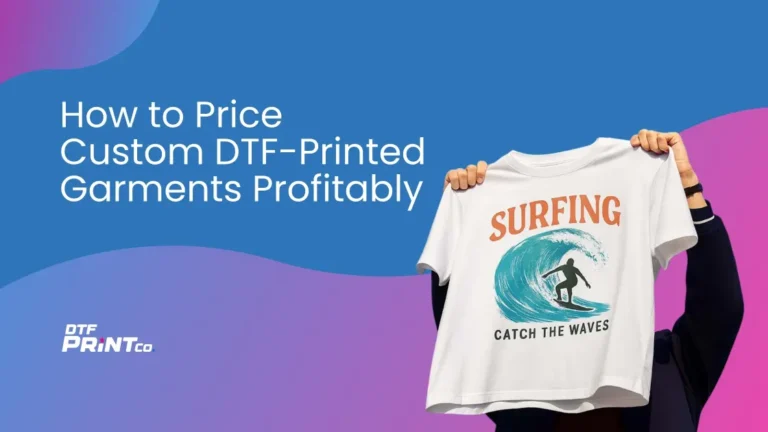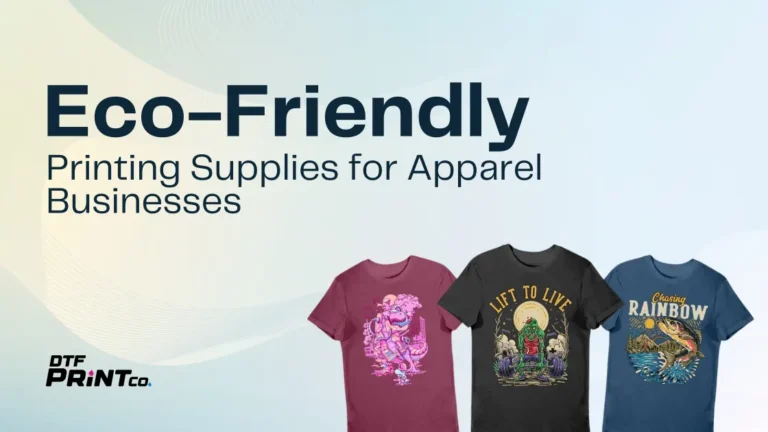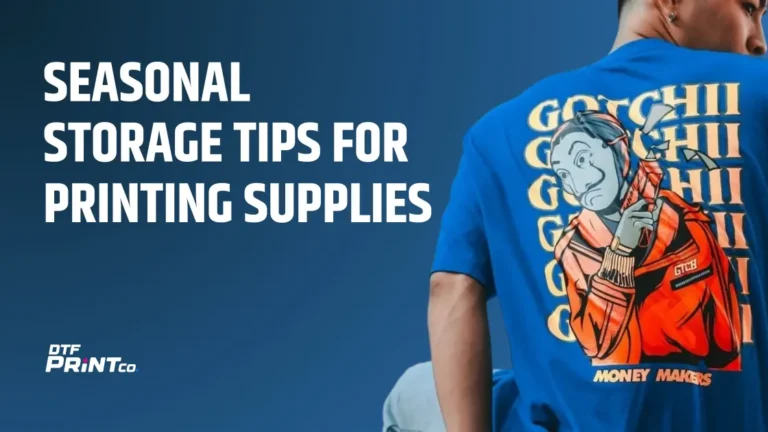Direct-to-Film (DTF) printing has rapidly gained attention in the world of custom apparel and textile design. It’s an innovative method where designs are printed onto special film and then transferred to fabric using adhesive powder and heat. This technology bridges the gap between quality and affordability, offering vibrant color prints, versatile material compatibility, and low setup costs.
But for beginners entering the DTF landscape, the learning curve can be intimidating. From terminology and equipment to proper application techniques, the first encounter with DTF can feel like decoding a foreign language. Most newcomers ask: “How long does it take to actually get good at this?” The answer? It depends on your commitment, resources, and how you approach each learning milestone.
Let’s break down the timeline from zero to confident DTF printer.
Phase 1: Clueless and Curious
The first few weeks of your DTF journey will likely be spent in research and exploration. You’ll find yourself Googling things like “What is DTF printing?”, “DTF vs DTG”, and “Best DTF printers for beginners.” During this time, your main goal is to understand the basics—not just how DTF works, but how it compares to other print technologies and what tools you’ll need to get started.
Key actions in this phase:
- Watching YouTube tutorials and unboxings of popular DTF starter kits
- Joining Facebook groups and Reddit threads for beginner tips and troubleshooting
- Exploring supplier websites to understand film types, hot melt powders, and PET film sheets
- Learning terminology like rip software, white underbase, curing temperatures, and pressure settings
By the end of this phase, you’ll likely still be confused about certain specifics, but you’ll know enough to move forward confidently. This is also when many aspiring DTF printers begin building their budget and equipment checklist.
Phase 2: Setting Up and Experimenting
After some initial research, you’ll likely take the plunge and invest in a DTF starter kit or individual components, such as:
- A DTF-compatible printer (converted Epson models are common)
- DTF inks (CMYK + white)
- RIP software for controlling print output
- Transfer films and hot melt adhesive powders
- A curing oven or heat press
The learning experience during this phase becomes hands-on, and this is where the real challenges—and breakthroughs—begin. Don’t expect everything to go smoothly at first. You’ll likely struggle with clogged print heads, improper curing temperatures, or prints that don’t adhere well to fabric. But each mistake teaches you more than hours of online research ever could.
Learning curve milestones include:
- Getting used to RIP software (often the most intimidating part for beginners)
- Understanding temperature and pressure variations based on garment types
- Adjusting color profiles for more vibrant output
- Learning the difference between hot peel vs cold peel films
You’ll also begin creating basic test designs to experiment with placement, size, and transfer success. If you dedicate several hours per week to practicing, you can start producing semi-consistent prints by the end of week 6
Phase 3: Consistency and Confidence Building
Once you’ve survived the initial trial-and-error phase, you’ll notice a shift: printing begins to feel less overwhelming. You’ve likely replaced at least one printhead, figured out your ideal curing settings, and started to troubleshoot issues without reaching for YouTube every 10 minutes.
This phase is about building consistency. You’re now working on small runs of prints for family, friends, or test orders—maybe even selling designs on Etsy or Facebook Marketplace. Most users find this 1–3 month window pivotal for mastering:
- Print alignment and placement for hoodies, T-shirts, tote bags
- Troubleshooting ink flow and conducting regular printhead maintenance
- Curing powder evenly to prevent sticky residue or cracked prints
- Saving favorite settings in your RIP software for repeat jobs
By the end of the third month, most users who’ve committed 4–6 hours weekly to practice are capable of producing high-quality, sale-ready DTF prints. This is where your confidence starts to shine, and you begin optimizing rather than guessing.
Phase 4: Growth and Refinement
Now that you’ve gained a solid grasp of the core DTF processes, it’s time to transition from “beginner” to intermediate DTF printer. This is the phase where confidence grows through repetition—and improvements in efficiency, creativity, and business sense.
During months 4 through 6, many DTF users begin to:
- Develop a unique print style or visual identity
- Expand into custom requests or small business contracts
- Batch print efficiently with improved RIP presets
- Source bulk materials to reduce per-unit costs
You’ll also start noticing subtle quality improvements as you refine your workflow. Your prints are more vibrant, better adhered, and consistent across different fabric types. This happens not by accident—but through persistence in controlling the details, such as:
- Humidity levels around your printer (which affects ink flow)
- Properly resting your prints post-curing to prevent premature cracking
- Optimizing hot-melt powder coverage for soft, even results
Many at this stage invest in better tools—like automated powder shakers, upgraded heat presses, or even a commercial-grade printer to increase capacity.
Pricing, Branding, and Real-World Practice
For those turning DTF into a side hustle or business, this is where branding and pricing strategy becomes crucial. You’ve spent months learning the craft—now it’s time to make it pay.
Here’s how most successful DTF operators scale up during this phase:
- Build a basic pricing model: Account for ink cost, film, powder, labor, time, and wear-and-tear. Don’t forget overheads.
- Develop a turnaround system: Customers want quick delivery, so creating reliable production workflows becomes vital.
- Create sample products: T-shirts, hoodies, tote bags, and even hats with your designs to showcase your capabilities on social media or Shopify.
You might also start learning the value of limited edition drops, niche market targeting, or personalized designs—strategies that drive loyalty and word-of-mouth referrals.
By this point, you’re no longer fumbling through settings and equipment. You have clear systems, templates, and backups for when things go wrong. DTF is no longer intimidating—it’s a tool you’ve mastered enough to mold creatively and profitably.
Phase 5: The Plateau and the Push
It’s not uncommon to hit a plateau in any craft—and DTF is no exception. By month 7 or 8, you may feel like you’ve “seen it all,” and your results have stabilized. But this is actually where the next major leap happens—if you push through it.
Instead of sticking to the basics, confident DTF printers begin exploring advanced techniques like:
- Mixed media printing (combining DTF with embroidery or vinyl)
- Special effect powders (puff, glow-in-the-dark, metallics)
- Multi-layered underbase techniques for darker garments
- Incorporating AI-generated art or vector art platforms into design workflows
They also begin streamlining their operation, learning to print dozens of designs in a single production day without burnout. This involves investing in workflow automation, delegating order fulfillment, and managing client expectations clearly.
Phase 6: Mastery and Innovation
As you near the one-year mark of your DTF journey, you’ll likely find yourself operating with ease, confidence, and a sense of authority in your workflow. This is where true mastery begins—not just in execution, but in understanding how all the elements interact to create consistently exceptional results.
At this level, you’re not just focused on output—you’re analyzing:
- Environmental variables like room temperature and humidity for print consistency
- Ink batch differences and how they affect color saturation
- Garment composition and weave tightness, which influence transfer adhesion
- Printhead longevity strategies like advanced maintenance routines and scheduled cleanings
You’ve likely developed a library of custom presets for different substrates and projects, enabling faster turnaround times without compromising quality. Mistakes become rare, and when they do occur, they’re fixed quickly without panic.
DTF experts also stay current on industry updates, including:
- New DTF printer models with dual-head tech or white ink circulation systems
- Upgraded software features that automate layout, nesting, or color profiling
- Emerging eco-solvent hybrid options or biodegradable adhesive powders
Scaling Your DTF Business and Workflow
With confidence comes scalability. Mastering DTF doesn’t just mean creating perfect prints—it also means building a business that grows without burning you out. By month 12, experienced DTF operators are often:
- Hiring help to manage production or customer service
- Offering bulk order discounts for local businesses or schools
- Creating recurring revenue streams through print-on-demand subscriptions or apparel drops
- Partnering with graphic designers or influencers to expand product lines
They also begin to delegate low-level tasks—like cleaning, order prep, and customer service—so they can focus on innovation, marketing, and high-value business development.
Common Milestones After 1 Year of DTF
Here’s a snapshot of what you should expect to be capable of after 12 months of steady practice and learning:
✅ Effortless setup and breakdown of printing and transfer processes ✅ Confidence in troubleshooting print quality or equipment issues ✅ Understanding ink dynamics and how to calibrate for color perfection ✅ Producing custom orders across varied substrates with repeatable quality ✅ Managing client expectations, pricing, deadlines, and production schedules ✅ Generating profit margins with scalable workflows and supplier relationships
At this stage, you’re not only fluent in DTF printing—you’ve become a practitioner who can educate others, offer consultations, or even resell starter kits to newcomers.
Final Thoughts: The Long Game of DTF Mastery
While many people enter the world of DTF hoping for quick results, the truth is that DTF printing mastery is a long game. Yes, you can produce decent prints in your first 60 days, but true confidence—the kind that lets you print, sell, and scale without second-guessing—comes with time, practice, and smart investment in tools and education.
If you commit to the process, invest in learning through hands-on trials, and push through the inevitable mistakes, you’ll transform from clueless beginner to confident creator in about 12 months.
Whether you’re printing for passion, profit, or both, the DTF journey is one of growth. And with every shirt, hoodie, or tote bag you print, you’re not just building a business—you’re building mastery, one transfer at a time.



